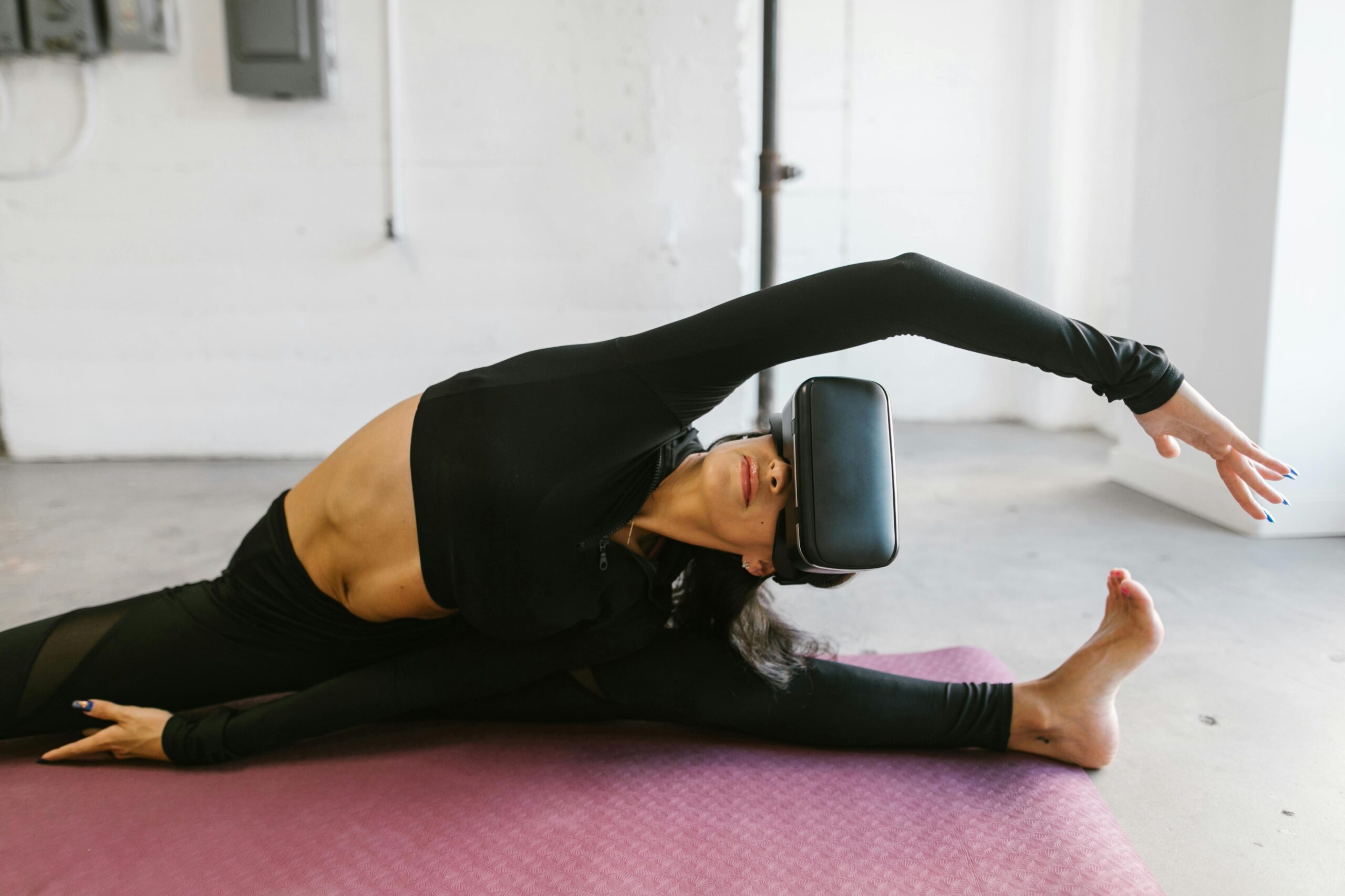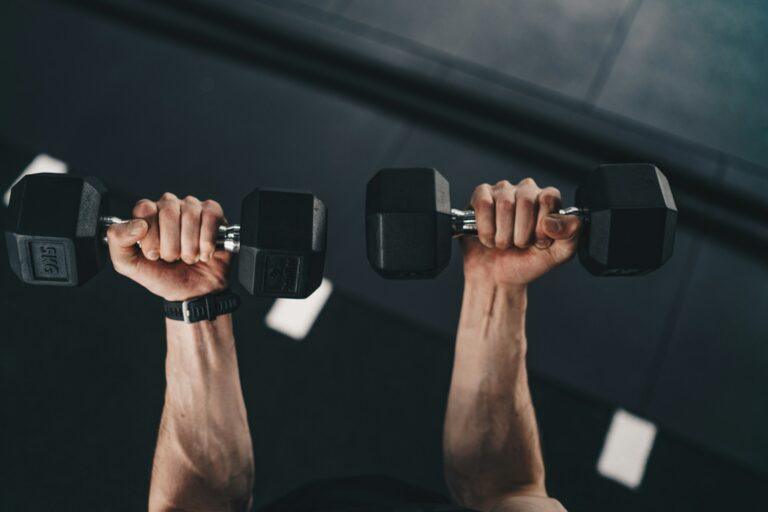Fitness’s Future: 2025 Trends That Will Change the Way We Move

Even though the sun hasn’t risen yet, you’re already working out. Your smart ring buzzes you awake—it’s time, your body’s ready. You pull on a sensor-packed shirt, and step into a virtual yoga class. Your instructor? A hologram, fixing your posture on the spot. By 7 a.m., you’ve powered through a strength workout with your AI coach, chilled out with an app-controlled ice bath, and got a nutrition plan from your sweat details. This ain’t no sci-fi. It’s the real deal in 2025, mixing up biology, tech, and big dreams.
And here’s how fitness is getting a whole new strong.
1. Wearable Tech: It’s Part of You Now
Old school trackers? Gone. Coming up—wearables you can’t even see. They know you better than ever.
Smart Clothes: Your New Coach
Picture this—leggings that nudge you to squat right, or a sports bra checking your breath. Brands like Hexoskin are ahead here, crafting clothes with built-in sensors for heart, breath, and muscles. These clothes link to apps, giving you real-time tips, making every move count.
Biometric Implants: The Ultimate Fitness Dashboard
For those seeking deeper insights, subdermal chips and non-invasive patches are pushing boundaries. The NFC Ring, for instance, uses near-field communication to monitor body temperature and stress hormones, while Profusa’s Lumee Oxygen Sensor embeds a tiny hydrogel chip beneath the skin to track tissue oxygen levels during workouts. Creepy? Maybe. Revolutionary? Absolutely.
| Wearable Tech Comparison | |
| Smart Fabrics | Real-time posture correction, muscle engagement tracking |
| Biometric Rings | Sleep recovery scores, stress level monitoring |
| Implantable Sensors | Blood oxygen, hydration, and lactate threshold analysis |
“Fitness isn’t just about how you move—it’s about how your body responds. These tools turn guesswork into strategy,” says Dr. Laila Rossi, a sports technologist at MIT.
CTA: Ready to upgrade your gear? Explore Hexoskin’s latest collection for clothing that works as hard as you do.
2. Hybrid Workouts: Where Digital Meets Physical
The pandemic taught us to pivot. Now, we’re perfecting the blend.
Virtual Reality Gyms: No Headset Required
Why stream a workout when you can step inside it? Startups like Holofit are transforming basements into virtual cycling trails and boxing rings using projection mapping and 3D sensors. Meanwhile, apps like Supernatural VR offer daily workouts in fantastical landscapes—think punching asteroids to the beat of a drum solo.
The Rise of “Phygital” Fitness Communities
Platforms like Zwift gamified indoor cycling. Now, they’re expanding into strength training and triathlons, connecting users worldwide for live competitions. Local studios are countering with hybrid memberships: Attend a spin class in person Tuesday, join the same group via augmented reality on Thursday.
CTA: Craving camaraderie? Join Zwift’s global cycling challenge and race against athletes in real time.
3. AI Coaches Learn Your Quirks (And Your Grind)
Your future trainer has no face, no ego, and a PhD in physiology.
Adaptive Algorithms That Outsmart Plateaus
Apps like Freeletics now use machine learning to adjust your program based on 200+ factors—sleep quality, joint mobility, even your Spotify playlists. If you bombed yesterday’s deadlifts? Today’s session auto-switches to mobility drills.
Voice-Activated Form Feedback
Amazon’s Halo View and Nike’s Training Club apps analyze workout videos to critique your plank alignment or kettlebell swing. The verdict: less “rah-rah” motivation, more actionable intel.
4. Sustainability: Gym Clothes That Don’t Cost the Earth
Fast fashion is losing its flex.
Carbon-Negative Activewear
Brands like Girlfriend Collective craft leggings from recycled water bottles, while TALA uses plant-based dyes and regenerative nylon. Even Adidas is in the game with its Futurecraft.Loop shoes, designed to be melted and remade repeatedly.
Solar-Powered Gyms
London’s Territory Gym runs on 100% renewable energy, and San Francisco’s Forward rewards members with discounts for biking to class.
CTA: Swap your polyester for Girlfriend Collective’s compostable leggings—your quads (and the planet) will thank you.
5. Recovery Tech: Ice Baths Meet AI
Rest days just got a tech upgrade.
Percussive Therapy Gets Smarter
Theragun’s Wave Series devices now sync with wearables to target muscle strain hotspots, while Hyperice’s Normatec Boots use AI to adjust compression based on your workout type.
Cryotherapy Goes Mainstream
Once reserved for athletes, whole-body cryo chambers now pop up in strip malls. Apps like The Cryo Bar let you book -200°F sessions to zap inflammation post-marathon.
6. Mental Fitness: Where Mind and Muscle Merge
Your Peloton isn’t just for cycling anymore.
Meditation-Infused Workouts
Apps like Peloton Guide now blend HIIT sessions with breathwork modules, and Equinox’s HeadStrong classes pair weightlifting with cognitive drills to sharpen focus.
Psychedelic-Assisted Training (Yes, Really)
In clinical trials, microdosed psilocybin is showing promise for reducing workout-induced anxiety. It’s early days, but startups like Mindbloom are already exploring guided fitness journeys paired with ketamine therapy.
The Bottom Line: Fitness Becomes Frictionless
By 2025, your routine won’t feel like routine. It’ll be a dynamic, hyper-personalized ecosystem that evolves as you do—no willpower required. The question isn’t whether you’ll adapt to these innovations; it’s which ones will become as essential as your sneakers.
What’s your 2025 fitness move? Tag us on social with your high-tech setup or recovery hack. Game on.

